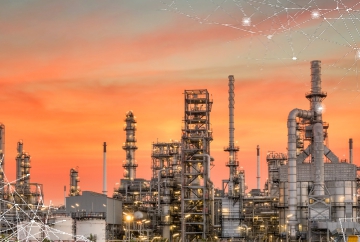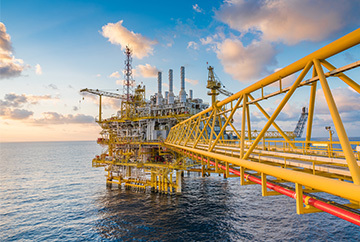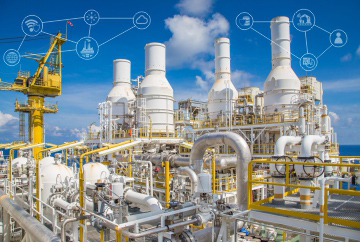What Is IoT in the Oil and Gas Industry?
In the competitive world of the Oil and Gas Industry, the companies strive to be cost-effective and still stay profitable and sustainable. The Internet of things in Oil & Gas industry is a network of physical objects with remote sensors, machine learning, and the cloud that are deployed in the upstream, midstream, and downstream operations for seamless collection of data, processing, and leveraging that data to streamline and simplify processes and supply-chain visibility, and drawing insights from that data for faster and effective decision making.
It enables the opportunity for increased productivity and optimization while monitoring the equipment using real-time data. The safety and security in extraction and delivery of valuable resources increase dramatically due to IoT solutions to automate the processes, hugely eliminating human error. This approach also helps boost production productivity by 6-8% by using the accompanied data analytics.
IoT Oil and Gas Use Cases
Implementation of digital technology like IoT potentially increases the revenue by up to 1.2%, which is highly impressive. The more progressive companies are shifting their focus from IoT smart things like sensors and other devices to curating daring approaches for using the data provided through these devices to create more intelligent business models driving their companies to new heights.
- Predictive Maintenance in Oil and Gas Industry
- Workforce Productivity
- Optimizing Logistics In Oil And Gas Industry
- Operations Risk & Intelligence
- Inventory Management in Oil and Gas Industry
- Production Optimization
- Pipeline Leak Detection
- IoT Controller and Gateway for Oil Refinery
- Virtual Rig Monitoring
- Remote Site Monitoring
- Real-time Shipment Tracking
- Mobile Field Enablement
- Pipeline Health Monitoring
- Refinery Automation
- Tank Monitoring
- Digital Twin In Oil and Gas Industry
- Seismic Oil Exploration
- Carbon Emission Control
- Hazard Management and Worker Safety
#1 Predictive Maintenance in Oil and Gas Industry
Asset inspection in the oil & gas industry presents accurate day-to-day operational processes insights and also assists companies in maintaining updated status information for efficient and secure operations. When attached to oil and gas machinery, IoT devices predict when they require maintenance, so the repairs can be scheduled long before their breakdowns to prevent long downtimes and ensure the safety of the employees.
Predictive Asset Maintenance has drastically reduced the need for unplanned downtime while decreased operations and maintenance costs. Smart machine learning algorithms can analyze big data to perform predictive and preventive maintenance on expensive equipment. Besides, smart sensors retrofitted on hundreds of different assets report critical operational variables that help examine abnormal conditions, which may fail. This permits operators to assign timely inspection and maintenance staff before any mishap to minimize production downtime and optimize asset uses.
#2 Workforce Productivity
IoT in the oil & gas industry intends to bridge communication gaps between those working in the field and those working at office locations, enhancing overall safety and workforce productivity. Installation of IoT devices like sensors, drones, and robots enables safety in gathering data and eliminates the need for on-site employees for smooth operation.
IoT and big data work together for energy management and external assistance for physical tasks to guide and optimize equipment usage. IoT technology enables the workers in the oilfields to stay connected and work more effectively.
#3 Optimizing Logistics In Oil And Gas Industry
Enhanced connectivity using IoT devices can drastically renovate end-to-end logistics and the supply chain with improved demand management, transparent material tracking, and more efficient logistics operations. If transparent tracking and proactive management of material and equipment are in place, material costs will reduce by 10%. IoT makes it possible to monitor the areas that are difficult to monitor due to the oil exploration sites' hazardous locations and hazardous conditions without any human intervention.
#4 Operations Risk & Intelligence
Drilling takes up most of the expense in oil and gas production, taking 20-30% of the total cost of production. Implementation of IoT devices increases operational productivity while optimizing water, chemicals, and sand usage. The optimized efforts in intelligence develop a higher yield in labor and time-effective manner. Research shows that advanced analytics can ideally cut down the operation time in half.
Similarly, deploying semi-automated field operations reduces personnel risk while reducing the cost of onboarding employees.




